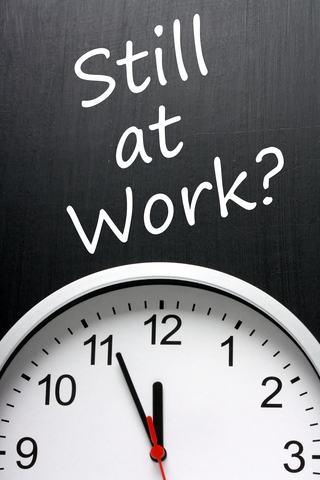As singer/songwriter Jim Croce wrote many years ago, “There never seems to be enough time to do the things you want to do.”
 With business growth and, in some companies, under-staffing, working more than the traditional 9 to 5 is common. But stop and think whether long working hours makes sense to continue.
With business growth and, in some companies, under-staffing, working more than the traditional 9 to 5 is common. But stop and think whether long working hours makes sense to continue.
Here are reasons for closing your doors after 35 or 40 hours and some ideas for achieving this result.
Business cost for long working hours
There are things that need to be done, but having workers do them on overtime hours is not necessarily a good solution.
It’s been reported that those who work more than 50 hours a week are less productive. Those who work more than 55 hours a week are significantly less productive.
What’s more, working long hours can lead to absenteeism and increased worker turnover.
Beyond this, there’s dollars and cents to consider. Unless salaried workers are “exempt,” you must pay time-and-a-half for those working more than 40 hours per week. A proposed change in the salary amount for determining exempt workers was issued by the U.S. Department of Labor.
The rule, which is expected to go into effect later this year, would raise the weekly wage from the current $455 to $679. This translates into an annual salary of $35,308 under the new rule (up from $23,660).
So having employees who are subject to this overtime pay rule work more than 40 hours a week is going to cost you. And more employees will fall within this pay rule under the new weekly wage amount. The DOL has posted FAQs on the proposed rule.
Health cost of long working hours
Small business owners typically regularly work long hours. SCORE found that 39% of owners work over 60 hours a week. Many employees also work more than 40 hours a week from time to time.
Whether this describes you or your employees, understand the health risks involved in working long hours.
- Increased cardiovascular problems. According to a study published last year, working 61 to 70 hours a week increased the risk of coronary heart disease by 42%. That risk rose to 63% for those working 71 to 80 hours a week.
- Increased risk of stroke. A study reported in The Lancet found that those who worked long hours increased their risk of having a stroke.
- Increased risk of suicide. A 2017 study found that the “odds for moderate to severe suicidal ideation were about four times greater in those with job strain or those who reported long work hours.”
Ideas on what to do
After looking at the business cost and health cost of overtime hours, decide whether you want to continue your current policies or take action to reduce workers’ hours.
Review your current staffing and project your business needs for the foreseeable future.
You may need to:
- Expand your staff. Define the jobs that you want to fill and budget accordingly.
- Use temporary workers for specific projects. Find temporary workers through agencies or online platforms for this purpose.
- Engage independent contractors where appropriate to handle the overload. But caution: If contractors are really employees (i.e., they’re doing exactly the same work and are subject to the same control), you can’t just label them as contractors; you must treat them as employees.


